The Philippines is poised to achieve a high average rice yield of 10 metric tons (MT) per hectare as it collaborates with China on the development of a Super Hybrid Rice that can potentially push cost down to a cheap P5 per kilo.
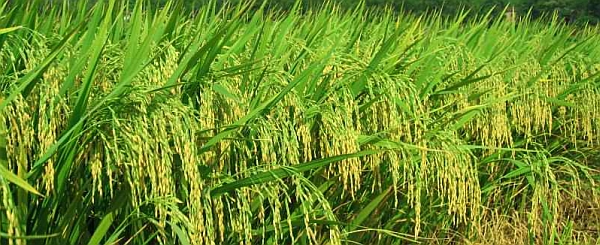
The target is possible as the Super Hybrid Rice that the China National Hybrid Rice R&D Center (CNHR-RDC) is developing has already hit a milestone when it reached in 2011 a goal to yield 13.5 MT.
Local rice experts are also ready to demonstrate the real potential of hybrid rice to raise yield when a Harvest Festival by SL Agritech Corp. (SLAC) is conducted on April 15.
This is in a farm tilled in Tabacao, Talavera, Nueva Ecija by an outstanding farmer, Ricardo Buenaventura, who is believed to be capable of producing this “10-5” target.
Raising yield to lower the cost is the single biggest challenge faced by the Department of Agriculture (DA) now. This will be the key to help farmers enjoy higher levels of living.
“The government’s program right now is to show farmers how to earn more because what’s important is how much is left in the pocket of farmers, not just how much income they make,” said DA Secretary Proceso J. Alcala.
The country is already approaching rice self-sufficiency with only 187,000 metric tons (MT) of imports this year.
“But after attaining self sufficiency, our next move is to help farmers lower production cost,” Alcala said.
Through the Super Hybrid Rice and 10-5 Program (SHR-10-5), government is optimistic the goal to make Filipino farmers rich is achievable.
“We want to have a yield of 10 tons at a cost of P5 per kilo. That’s the dream. We have a long on-going cooperation with China in Philscat. We’re establishing more aggressive cooperation because China was the one that gave us initial programs on hybridization of rice,” Alcala said.
Yuan Long Ping, known as the Father of Hybrid Rice and CNHR-RDC director general, foresees the SHR will become a commercial success in the Philippines in three years. Yuan was premiere guest at Philippines’ First Hybrid Rice Congress held last week.
“We will send super hybrid varieties for testing here next year—in the dry season,” said Yuan. “Maybe after three years, our super hybrid rice will be commercialized in the Philippines through our joint efforts. We will strengthen the friendship between Philippines and China through it.”
The P5 per kilo production cost is possible if farmers will have an average of 10 MT yield at a P50,000 per hectare cost, according to Henry Lim Bon Liong, SLAC chairman.
SLAC has a long-standing collaboration with CNHR-RDC that has resulted in the development of SL-8H hybrid rice. This has enabled farmers to yield seven to 10 MT per hectare from their former three to five MT using inbreds.
“With a progressive farmer like Mr. Ric Buenaventura,10 tons per hectare is achievable. That’s why I’m inviting you on April 15 for everyone to see for themselves how Mr. Buenaventura does it. He is only an elementary graduate, but he had sent all his five children to college. He’s now rich. He owns 24 hectares almost 100 percent of is planted with SL-8H,” said Lim.
Yuan’s Super Hybrid Rice actually had in 1999 a record yield of 17.055 MT per hectare in Yongsheng County in Yunnan Province.
Mechanization will be an important component of the SHR-10-5 which will be provided through the Philscat or the Philippine Sino Center for Agricultural Technology, a P69 million grant by China up to 2016.
“In China about 70 percent of our rice field is mechanized. That includes everything, not only hybrid rice,” said Yuan.
Another enabling environment to make rice farming prosperous, according to Yuan, is provision of seed and tax incentives.
“Our government has many good policies to encourage farmers. One is they provide free-of-charge hybrid rice seeds. The seed company does not need to pay tax. It’s an efficient and economical way to increase food production. Hybrid rice increases rice production very fast. Of course cost of seed is higher, but economic return is much higher than any seed cost,” said Yuan.
China’s SHR program consists of four phases. Phase 1 raised yield of 8.25 MT per hectare yield in the 1990s to 10.5 MT as of 2000. In Phase 2 from 2001 to 2005, it achieved 12 MT. The ongoing Phase 3 already reached its target of 13.5 MT in 2011.
Phase 4 has a target yield of 15 MT set to be achieved by 2020.
China presently has 17 million hectares of hybrid rice area, 58 percent of its 29.5 million hectare rice area, feeding some 70 million people. On the other hand, Philippines’ hybrid rice area is placed at just five percent at 146,000 hectares in 2012.
DA Asst. Sec. Dante S. Delima said the government is supporting the expansion of hybrid rice whose area is targeted to reach to 281,397 hectares in 2013. This will further be expanded to 350,000 hectares by 2014.
Government is also expanding the Sikat Saka program which now has a P500 million loan facility through Land Bank of the Philippines and a supposedly more relaxed application procedure.
“Now the collateral not just land land title, but motor vehicle registrations, credentials of carabao (as plowing animal),” Delima said.
###
ABOUT PROF. YUAN LONGPING
Prof. Yuan Longping, a Chinese farmer, agricultural scientist and educator, has been recognized as the Father of Hybrid Rice after many countries have benefitted from his idea to hybridize rice at a time when China was suffering in the 1960s from a severe famine that caused many deaths.
Today hybrid rice use has expanded all over Asia, America, and Africa.
Yuan became successful in developing hybrid rice that had a yield advantage over common rice by crossbreeding rice with a distant relative, the wild rice that had superior planting durability.
With his efforts, China’s rice production ballooned from only 5.69 billion tons in 1950 to 19 billion ton-level at present.
Yuan also has an advocacy to reduce rice wastage, believing that wasting rice is a crime. Some P6.2 billion worth of rice is wasted in the Philippines yearly as each Filipino wastes about two tablespoons of rice daily, he estimates.
He is a laureate of the World Food Prize, the Ramon Magsaysay Award (2001), the State Preeminent Science and Technology Award of China, the Wolf Prize in Agriculture, and more than 10 others.
While being offered a position that is equivalent to a prime minister level, Yuan chooses to remain a simple farmer since a state position would take away his freedom to move around the farm and would require him to be surrounded by security officers.
China’s new leadership led by President Xi Jinping, now leading one of the world’s most powerful nations with a big 1.3 billion population, is set to visit him this April 2013 in recognition of what he can contribute to the food welfare of China, consequently, the world.
At 82, he still goes to the farm two times daily—at 5 a.m. and at 4 pm.
###
ABOUT PHILSCAT
Philscat or the Philippine-Sino Center for Agricultural Technology aims to promote high yield through hybrid rice production and mechanization. Phase 1 was completed through a $5 million grant from the Chinese government with a Philippine government counterpart. The Yuan Long Ping High Tech Agriculture Co. also invested $1 million in the project. Phase 2 involves a P69 million grant from China that has been ongoing from 2011 and will last up to 2016. It will have a biogas component.
Its Phase 1, implemented from 2003 to 2008, tested 50 Chinese hybrid rice varieties.
These are other accomplishments of Philscat Phase 1:
1. Established technology demonstrations in 33 municipalities scattered in 22 major rice growing provinces in Regions 1, 2, 3, 4B, 5, 6, 7, 8, 9, 11, 13 and Cordillera Autonomous Region
2. Exceeded target yield by 18 percent in some demonstration areas particularly the demo site in San Jose City, Nueva Ecija which attained a yield of 16.02 MT per hectare
3. Bred seven new hybrid lines, initially named Philscat 1 to 7, using existing local rice genetic resources
4. Obtained accreditation process from the Philippine National Seed Industry Council for the now named as Mestizo 12 or NSIC RC174H (LP0331), Mestizo 13 or NSIC RC176H (LP0353) and Mestizo 14 or NSIC RC178H (LP0330)
Under the mechanization program, it tested the functions of 73 units of farm machines to suit the Philippine farming system. It had on-farm demonstration of agricultural machines in nine provinces including Nueva Ecija, Pangasinan, Pampanga, Tarlac, Bulacan, Bataan, Zambales, Albay and Isabela.
Using PhilSCAT demonstrated machines, the traditional labor input of at least 20 man-day per hectare for seedbed preparation, pulling of seeds, and transplanting have been reduced to only five man-days per hectare.
The total manual labor input of harvesting with traditional mechanical threshing operations of about 25 man-day per hectare has been significantly reduced to two man-days per hectare. Postharvest losses was reduced by five to 10 percent using PhilSCAT’s rice combine harvester and thresher, mechanical dryer and rice mill.
###
About SL AGritech Corp. (SLAC)
SLAC is the Philippines’ biggest producer of hybrid rice seeds and is the country’s pioneer in hybrid rice research and development (R&D). At a time when businesses veer away from agriculture owing to its inherent risks brought about by weather, nature-related, and calamity-related uncertainties, SLAC’s parent firm Sterling Group of Companies, stuck its neck out, took the risk, and invested capital in hybrid rice R&D. Today, SLAC produces popular hybrid rice seed SL-8H which has helped uplift the lives of many Filipino farmers through higher rice yield. By empowering them through training by SLAC technicians in precision farming skills and the pride to sell good-quality rice, hundreds of farmers are now able to educate their children, become farm entrepreneurs, and enjoy a higher standard of living. Farmers are able to access otherwise hard-to-reach financing facilities through the company’s “Plant Now Pay Later” program. This contract growing which is under the company’s Corporate Social Responsibility program also gives farmers the assurance of a market which is one of the most difficult tasks in the rice farming value chain whose absence can bring untold miseries to many farmers. SLAC buys their produce 100 percent at higher price compared to market From this contract growing program, SLAC produces the Dona Maria premium rice Miponica and Jasponica, the “best tasting rice in the Philippines, probably the whole world.” The company has international partnerships for hybrid rice seed production in Asia (Vietnam, Bangladesh, Indonesia, Myanmar and Cambodia) and Africa in a humanitarian aim to help solve food security threats and global hunger.
###
For any questions, please call Ms. Joh Dungca, SLAC, 0917-558-6508; for interview requests, 0923-436-3177

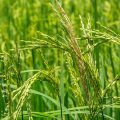
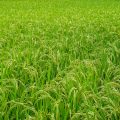
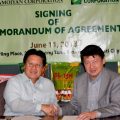
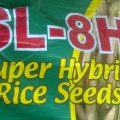

pls give an idea .where i find a hybrid seeds of sl-18
puro kayo satsat, wala namang nakukuha ang mga magsasaka kasi naibulsa na ng mga politiko. tae!@